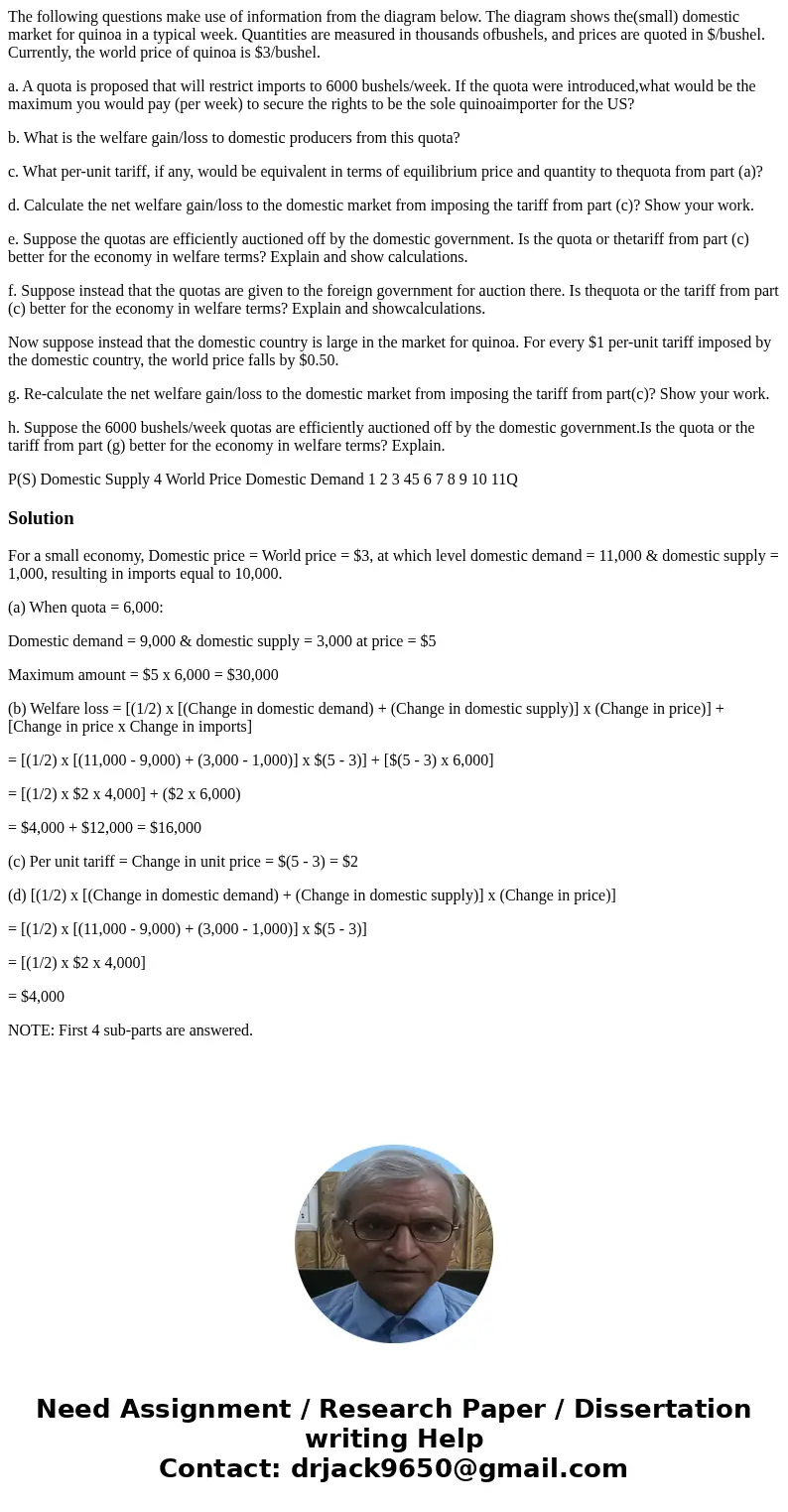The following questions make use of information from the dia
The following questions make use of information from the diagram below. The diagram shows the(small) domestic market for quinoa in a typical week. Quantities are measured in thousands ofbushels, and prices are quoted in $/bushel. Currently, the world price of quinoa is $3/bushel.
a. A quota is proposed that will restrict imports to 6000 bushels/week. If the quota were introduced,what would be the maximum you would pay (per week) to secure the rights to be the sole quinoaimporter for the US?
b. What is the welfare gain/loss to domestic producers from this quota?
c. What per-unit tariff, if any, would be equivalent in terms of equilibrium price and quantity to thequota from part (a)?
d. Calculate the net welfare gain/loss to the domestic market from imposing the tariff from part (c)? Show your work.
e. Suppose the quotas are efficiently auctioned off by the domestic government. Is the quota or thetariff from part (c) better for the economy in welfare terms? Explain and show calculations.
f. Suppose instead that the quotas are given to the foreign government for auction there. Is thequota or the tariff from part (c) better for the economy in welfare terms? Explain and showcalculations.
Now suppose instead that the domestic country is large in the market for quinoa. For every $1 per-unit tariff imposed by the domestic country, the world price falls by $0.50.
g. Re-calculate the net welfare gain/loss to the domestic market from imposing the tariff from part(c)? Show your work.
h. Suppose the 6000 bushels/week quotas are efficiently auctioned off by the domestic government.Is the quota or the tariff from part (g) better for the economy in welfare terms? Explain.
P(S) Domestic Supply 4 World Price Domestic Demand 1 2 3 45 6 7 8 9 10 11QSolution
For a small economy, Domestic price = World price = $3, at which level domestic demand = 11,000 & domestic supply = 1,000, resulting in imports equal to 10,000.
(a) When quota = 6,000:
Domestic demand = 9,000 & domestic supply = 3,000 at price = $5
Maximum amount = $5 x 6,000 = $30,000
(b) Welfare loss = [(1/2) x [(Change in domestic demand) + (Change in domestic supply)] x (Change in price)] + [Change in price x Change in imports]
= [(1/2) x [(11,000 - 9,000) + (3,000 - 1,000)] x $(5 - 3)] + [$(5 - 3) x 6,000]
= [(1/2) x $2 x 4,000] + ($2 x 6,000)
= $4,000 + $12,000 = $16,000
(c) Per unit tariff = Change in unit price = $(5 - 3) = $2
(d) [(1/2) x [(Change in domestic demand) + (Change in domestic supply)] x (Change in price)]
= [(1/2) x [(11,000 - 9,000) + (3,000 - 1,000)] x $(5 - 3)]
= [(1/2) x $2 x 4,000]
= $4,000
NOTE: First 4 sub-parts are answered.

 Homework Sourse
Homework Sourse